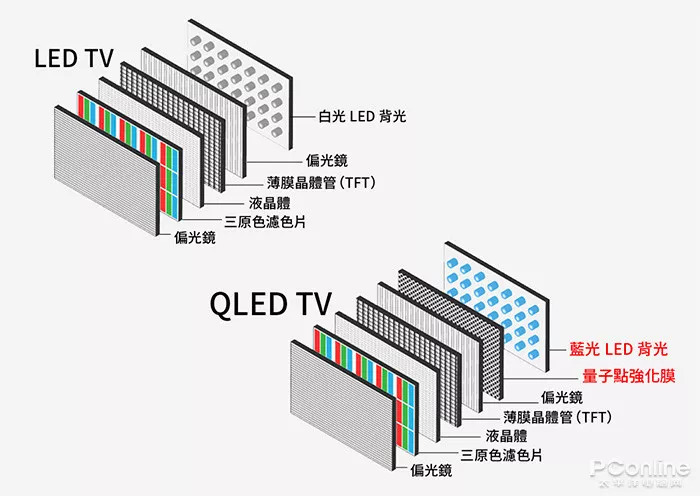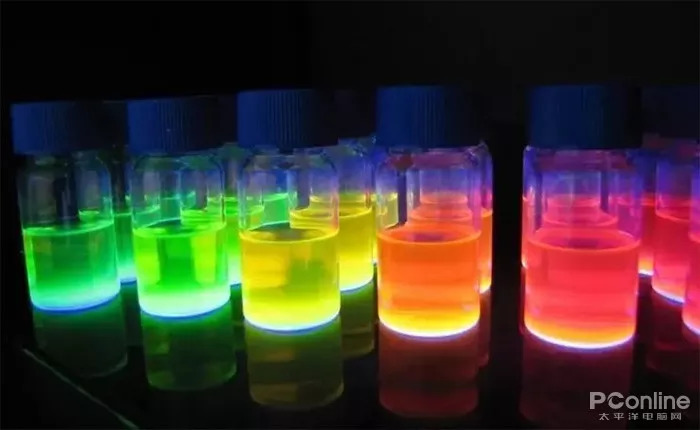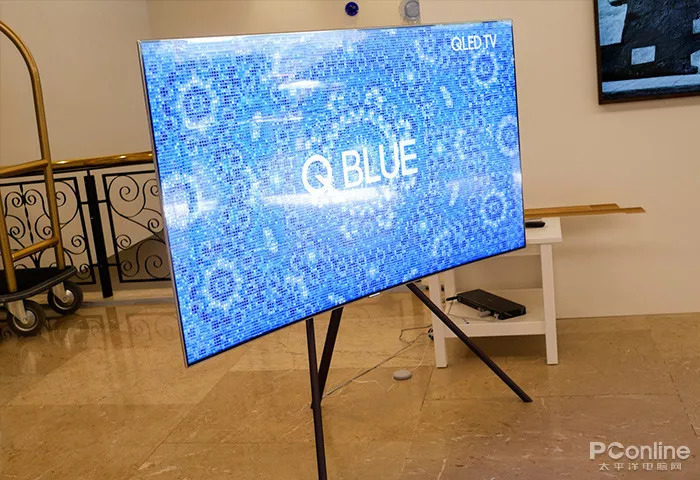In the color TV market, QLED TVs are becoming more and more fierce under the competition of traditional companies such as Sony, Samsung, and Hisense. After LCD technology reaches the bottleneck, many manufacturers will begin to develop their own new display technologies. OLED technology has been developed for many years, but it has never found a reasonable position between sales and high-end. And now it is beginning to boast about the "QLED quantum dot" technology, but for consumers, apart from looking very tall, they know nothing about it, but they are highly sought after by TV manufacturers. Today I will tell you how powerful QLED TVs are. What are QLEDs and quantum dots? QLED is the abbreviation of "Quantum Dots Light Emitting Diode Display", the Chinese translation is Quantum Dots Light Emitting Diode. In fact, QLED TV is also a kind of LED TV, but it uses quantum dot technology to improve the display quality of key images. This technology can generate images by electrically driving light without the need for liquid crystals and backlights. It is a new type of screen technology. QLED is more like OLED, it can also emit light like OLED, but the light source is not a diode, but a quantum dot. Quantum dots are nano-sized spherical materials that cannot be seen by the naked eye, and will self-luminesce under the action of voltage. Simply put, quantum dots are actually particles that emit light and change color. Features of QLED technology ①The display effect is more prominent than the lumbar disc The color of the TV light depends on the gap of the luminescent material. For some materials, the gap is certain, so most materials can only emit light of one color. Every kind of material emits a kind of light. Doesn't it require a lot of materials for so many colors in nature? It is true, but it is so easy to find so many kinds of luminescent materials, which has led to the release of many colors of light. This has been a problem for many years. The emergence of quantum dots perfectly solves this problem. Because the material of quantum dots is so small that the human eye cannot see it, by controlling the concentration and temperature, quantum dots can emit all the light in nature. To use this feature in technical terms is wide color gamut. The light emitted by QLED is of high purity, so it is very helpful to enhance the color effect. Samsung once said: The color of QLED can be comparable to any display technology in the world. ② Thinner than ultra-thin Due to the particularity of the material, the volume of QLED is only 2 nanometers to 10 nanometers. This thickness is much smaller than traditional LCD screens, and even a little thinner than flexible OLEDs. Television, as thin as a piece of paper, is expected to be shown to the public in the near future. ③ Brighter than any display technology QLED itself is also a kind of LED, and the brightness of LED is very satisfactory. Now with quantum dots, the display effect will be brighter. QLED can make all the colors on the screen brighter without losing saturation. This technology can also complement HDR, which is good for the development of both. We have done several sets of different TV brightness comparisons, the proofs are as follows: It can be seen from the figure that, compared to the four TVs with different technologies, QLED has obvious advantages in brightness. In contrast, the color of OLED is relatively dimmer. With the addition of brightness, the color of QLED also appears It is more vivid and closer to what the human eye sees. QLED and OLED, which is stronger? From the perspective of manufacturing costs, the cost of QLED screens is less than half that of OLEDs. The complex process and low production yield have always been congenital problems that OLEDs have not been able to overcome. In contrast, QLEDs are relatively simple and are in mass production. There is an absolute advantage. Judging from the picture effect, the black of OLED is more pure, but the problem that it brings is insufficient brightness. The brightness of QLED almost kills other technologies, and the colors are more vivid. In terms of power saving, QLED has higher luminous efficiency, which is 30-45% higher than OLED under the same image quality. It’s hard to tell who is strong and who is weak. Nowadays, all technologies are not very mature. Under the promotion of LG, OLED is slowly circumventing its own shortcomings. LG’s OLED has certain price, size, and screen. Improve and upgrade. However, today's QLED TVs are not really QLED technology, and it will take at least three to five years to see the results of the contest between the two. Summary: QLED has the potential to become mainstream QLED has been favored by many people since the concept was born. On the one hand, the price is low, and on the other hand, the display effect is outstanding. Now the penetration rate of QLED is increasing. Under the promotion of Samsung, a brand new purchase effect may be formed in the market. Especially in the era of consumption upgrades, consumers will have higher and higher requirements on color TVs, and the display effect of QLED just meets this trend, and it may become the mainstream technology in the TV market in the future. Computer Screen Protector,Screen Protector For Computer,Screen Protector,Best Computer Screen Protectors Guangdong magic Electronic Limited , https://www.magicmax.cc


